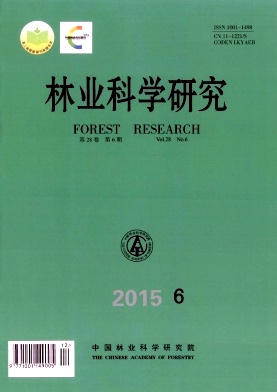|
[1]
|
Lau S, Shao N, Bock R, et al. Auxin signaling in algal lineages:fact or myth?[J].Trends in plant science, 2009, 14(4):182-188. |
|
[2]
|
Salehin, M., Bagchi, R., Estelle, M. SCFTIR1/AFB-based auxin perception:mechanism and role in plant growth and development[J]. The Plant Cell, 2015, 27(1):9-19. |
|
[3]
|
Yu H, Moss B L, Jang S S, et al. Mutations in the TIR1 auxin receptor that increase affinity for auxin/indole-3-acetic acid proteins result in auxin hypersensitivity[J]. Plant physiology, 2013, 162(1):295-303. |
|
[4]
|
Villalobos L I A C, Lee S, De Oliveira C, et al. A combinatorial TIR1/AFB-Aux/IAA co-receptor system for differential sensing of auxin[J]. Nature Chemical Biology, 2012, 8(5):477-485. |
|
[5]
|
Dharmasiri N, Dharmasiri S, Estelle M. The F-box protein TIR1 is an auxin receptor[J]. Nature, 2005, 435:441-445. |
|
[6]
|
Parry G, Calderon-Villalobos L, Prigge M, et al. Complex regulation of the TIR1/AFB family of auxin receptors[J]. Proceedings of the National Academy of Sciences, 2009, 106:22540-22545. |
|
[7]
|
Hu Z, Keçeli M A, Piisilä M, et al. F-box protein AFB4 plays a crucial role in plant growth, development and innate immunity[J]. Cell research, 2012, 22:777-781. |
|
[8]
|
Ruegger M, Dewey E, Gray W M, et al. The TIR1 protein of Arabidopsis functions in auxin response and is related to human SKP2 and yeast Grr1p[J]. Genes & Development, 1998, 12(2):198-207. |
|
[9]
|
Ren Z, Li Z, Miao Q, et al. The auxin receptor homologue in Solanum lycopersicum stimulates tomato fruit set and leaf morphogenesis[J]. Journal of experimental botany, 2011, 62(8):2815-2826. |
|
[10]
|
Bian H, Xie Y, Guo F, et al. Distinctive expression patterns and roles of the miRNA393/TIR1 homolog module in regulating flag leaf inclination and primary and crown root growth in rice(Oryza sativa)[J]. New Phytologist, 2012, 196(1):149-161. |
|
[11]
|
甘肖梅.桂林岩溶石山阴香光合生理生态特性研究.广西:广西师范大学硕士论文, 2010.
|
|
[12]
|
Peer W A. From perception to attenuation:auxin signalling and responses[J]. Current opinion in plant biology,2013,16(5):561-568. |
|
[13]
|
Jurado S, Díaz-Triviño S, Abraham Z, et al. SKP2A, an F-box protein that regulates cell division, is degraded via the ubiquitin pathway[J]. The Plant Journal, 2008, 53(5):828-841. |
|
[14]
|
Ljung K. Auxin metabolism and homeostasis during plant development[J]. Development, 2013, 40:943-950. |
|
[15]
|
Xie Q, Frugis G, Colgan D, et al. Arabidopsis NAC1 transduces auxin signal downstream of TIR1 to promote lateral root development[J]. Genes & Development, 2000, 14(23):3024-3036. |
|
[16]
|
Guseman J M, Hellmuth A, Lanctot A, et al. Auxin-induced degradation dynamics set the pace for lateral root development[J]. Development, 2015, 142(5):905-909. |
|
[17]
|
Piya S, Shrestha S K, Binder B, et al. Protein-protein interaction and gene co-expression maps of ARFs and Aux/IAAs in Arabidopsis[J]. Frontiers in Plant Science, 2014, 5:1-9. |
|
[18]
|
Gupta A, Singh M, Laxmi A. Interaction between glucose and brassinosteroid during the regulation of lateral root development in Arabidopsis[J]. Plant Physiology, 2015, 168(1):307-320. |
|
[19]
|
Xia K, Wang R, Ou X, et al. OsTIR1 and OsAFB2 downregulation via OsmiR393 overexpression leads to more tillers, early flowering and less tolerance to salt and drought in rice[J]. PLoS One, 2012, 7(1):e30039. |





 DownLoad:
DownLoad: